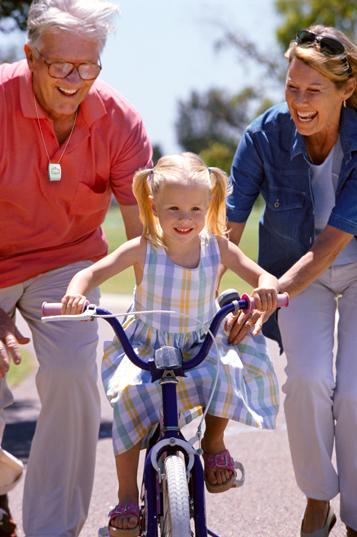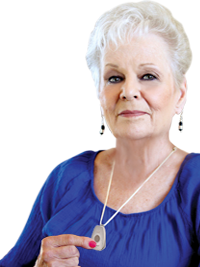by Heidi Nestor, Writer and Editor,
Life Alert

April 7th is World Health Day promoted by the WHO.
No, not the 70s English Rock Band, but the World Health
Organization, whose goal is to bring awareness about health issues
through public health campaigns.
In their research on aging, WHO predicts that the number of people aged
60 and over will double from 11% to 22% globally.
“By then,” they claim, “there will be more older people than
children 14 and under – a turning point in human history.”[1]
One of the reasons why there are more older people than ever before is
because people are living longer thanks to modern medicine and health
conscious campaigns highlighting diet and exercise as the fountain of
youth. Furthermore, old age
is being redefined by the current senior generation as seen with rock
and roll icon, Roger Daltrey.
Although he may still be belting out ageless lyrics such as,
“Hope I die before I get old”, he, at the ripe age of 70, is about to
embark on a 50th Anniversary World Tour with The Who; yes,
the 70s English Rock Band.
Aging does not mean being stagnated. Seniors are active, involved, and
rock’n out. “Their years of experience can make them models of personal
resilience and sources of inspiration and practical knowledge.
They give voluntary aid, care for grandchildren or neighbors, and
participate in support or recovery initiatives.”[2]
So, is 70 the new 50? Perhaps, but though the will is
strong, the flesh may be weak, and arthritic, with high blood pressure
and cholesterol, all which can make seniors vulnerable and jeopardize
their independence. WHO
notes; “Older people who normally can manage on their own with mild to
moderate impairments also risk becoming disable…”[3] Maintaining
one’s lifestyle and independence is key to aging gracefully and happily.
But there are dangers to be mindful of.
An older person with arthritic knees and diminished
vision, living alone in a high-rise apartment with no family members or
friends nearby, can become incapable of getting food or water or feel in
danger, and my be overlooked by neighbors.[4]
Sometimes, the older person does have someone
checking in with them but after they leave an accident can occur, such
as a fall, rendering the senior unable to get up until someone checks on
them again, which can be days later.
WHO has discovered that active aging depends on an
interplay of social, structural, and material factors which will affect
how resilient or vulnerable people become as they grow older; for
example, environment. WHO
points out that older people living in precarious environments or are
disabled are particularly at risk.
Rural and remote areas can create challenges for the elderly in
that they may not be as well informed by the media about imminent
emergencies; and severe weather conditions could affect their home as
well as their bodies.
Moreover, living alone far out from neighbors and friends can leave them
vulnerable in an emergency.
All in all, WHO concludes that the “Active Ageing
framework is based on the recognition of the human rights of older
persons…”[5] With diet and
exercise, one can maintain strength and agility in their golden years,
and with a medical alert system, such as Life Alert, seniors have a
right to choose to live in their own homes whether it be in a rural
countryside or high-rise apartment.
“…Talkin’ ‘bout my g-g-g-generation,” Life Alert also
understands that today’s modern seniors aren’t staying home vegging out
on TV; they are active members of society whose needs for personal
protection must be as mobile as they are.
With Life Alert’s HELP cell phone, seniors can stay protected
while on the go. Better still,
Life Alert is so inexpensive that aging rockers can still afford to go
to a WHO concert and be protected at the same time! Now that’s the new
(aging) generation, baby!
[1] World
Health Organization, Older
Persons in Emergencies: An Active Aging Perspective, pg.3
The articles on this
Life Alert website are covered by a
Creative Commons License.
You are free to copy, distribute, display, and perform the work; to make derivative works; to make commercial use of the work --
under the following conditions: Attribution --You must attribute the work in the manner specified by the author or licensor. For any reuse or distribution, you must make clear to others the license terms of this work. Please go to the
Creative Commons License site for more information on the CC license that applies to this work.
For more information about
Life Alert and its many services and benefits for seniors – available in
New York, California, Florida, and other states nationwide -- please visit the following websites:
http://www.lifealert.net
http://www.seniorprotection.com
http://www.lifealertnewyork.com






